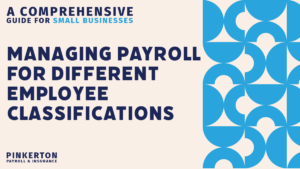The Affordable Care Act (ACA) requires applicable large employers (ALEs) to offer affordable, minimum value health coverage to their full-time employees or possibly pay a penalty. This employer mandate is also known as the “employer shared responsibility” or “pay or play” rules.
ALEs can use one of two methods to determine whether employees are full time under the employer shared responsibility rules:
- The monthly measurement method determines full-time status for each calendar month based on the employee’s hours of service in that month.
- The look-back measurement method determines full-time status for a longer period of time based on average hours of service during a prior period.
The evolving coronavirus (COVID-19) pandemic has caused some confusion and uncertainty in applying the look-back measurement method during periods of layoff, furlough, and COVID-19 related periods of paid and unpaid leave.
This ACA Compliance Bulletin provides information for employers regarding how the look-back measurement method applies to COVID-19 related absences.
Overview
The IRS created the look-back measurement method to give ALEs greater predictability and stability for determining full-time status. The look-back measurement method involves:
- A measurement period for counting hours of service (called a standard measurement period or an initial measurement period, depending on the circumstances);
- An optional administrative period that allows time for enrollment and disenrollment; and
- A stability period during which coverage is provided if the employee averages full-time hours during the prior measurement period.
Look-back Measurement Method and COVID-19
Federal agencies have not issued any guidance regarding the ACA’s employer shared responsibility rules in light of the COVID-19 outbreak. As a result, the general rules for determining employee status apply.
In general, under the look-back measurement method, full-time employee status in a stability period is based on hours of service in the prior applicable measurement period. This is the case regardless of whether the employee experiences a leave of absence or reduced hours of service during the measurement period or stability period. Normally, any changes in hours of service during a stability period will be captured in a subsequent measurement period, which will affect full-time status in a subsequent stability period.
| To determine an employee’s hours of service, an employer must count: | Working Hours: Each hour for which the employee is paid, or entitled to payment, for the performance of duties for the employer; and Non-working Hours: Each hour for which an employee is paid, or entitled to payment, on account of a period of time during which no duties are performed due to vacation, holiday, illness, incapacity (including disability), layoff, jury duty, military leave or leave of absence. |
All periods of paid leave must be taken into account; there is no limit on the hours of service that must be credited.
“Special Unpaid Leave”—FMLA Leave, USERRA Leave and Jury Duty Leave
The employer shared responsibility final regulations include a method for averaging hours when measurement periods include special unpaid leave—leave under the Family and Medical Leave Act (FMLA) or the Uniformed Services Employment and Reemployment Rights Act (USERRA) and leave for jury duty. This method only applies to an employee who is treated as a continuing employee upon resuming services for the ALE, and not to an employee who is treated as terminated and rehired. Under the averaging method, the ALE either:
- Determines the average hours of service per week for the employee during the measurement period excluding the special unpaid leave period, and uses that average as the average for the entire measurement period; or
- Treats employees as being credited with hours of service for special unpaid leave at a rate equal to the average weekly rate at which the employee was credited with hours of service during the weeks in the measurement period that are not special unpaid leave.
Rehired Employees and Employees Returning from Leave
The final regulations also include guidance for ALEs on how to classify an employee who earns an hour or more of service after the employee terminates employment (or has a period of absence). If an employee goes at least 13 consecutive weeks without an hour of service and then earns an hour of service, he or she may be treated as a new employee for purposes of determining his or her full-time status. The ALE may apply a rule of parity for periods of less than 13 weeks. Under the rule of parity, an employee is treated as a new employee if the period with no credited hours of service is at least four weeks long and is longer than the employee’s period of employment immediately before the period with no credited hours of service.
For an employee who is treated as a continuing employee, the measurement and stability periods that would have applied to the employee, had he or she not experienced the break in service, would continue to apply upon the employee’s resumption of service.






